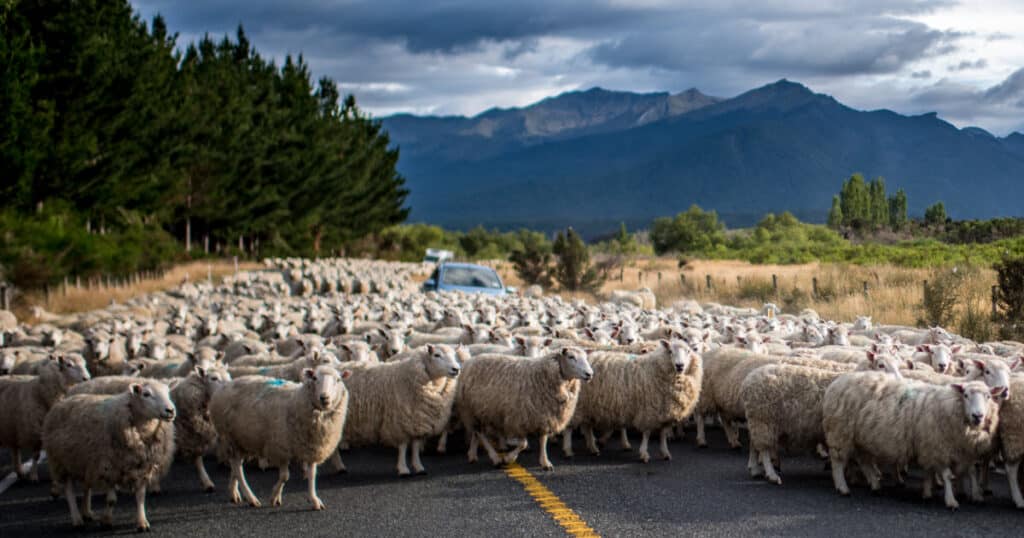There’s no doubt about it: New Zealand is known for its sheep. The country has a great many of these woolly mammals. You may have heard that there are more sheep than people in New Zealand. But is this true? How many sheep are in New Zealand really, and how does the population of these animals in New Zealand compare to that of other countries around the world?
We’ll explore all of this and more in today’s article.
So, How Many Sheep Are in New Zealand?
The population of sheep in New Zealand, as significant as it is now, used to be much higher. For example, in 1982 (a time that New Zealanders sometimes refer to as “peak sheep”), there were more than 70 million sheep in the country. As recently as the year 2000 there were 40 million sheep in New Zealand. At last count (as of January of 2019) there were 27.4 million sheep in New Zealand.
Are There More Sheep than People in New Zealand?
The sheep to person ratio in New Zealand is 5.6 to 1 (5.6 sheep for every person) as of January 2019.
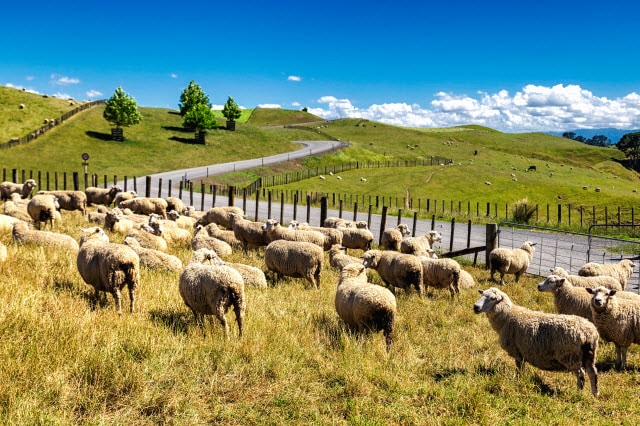
At one time, the sheep to people ratio in New Zealand was as high as 22 sheep for every human being.
Why Has the Number of Sheep in New Zealand Declined?
There were several different factors that contributed to the reduction of sheep numbers in New Zealand.
Decades ago, land that had been traditional farmland was taken over by dairy farms and urban sprawl. Some were converted to orchards (for growing kiwifruit) and vineyards. The growing popularity of dairy farming has been instrumental in reducing sheep numbers.
Another factor was increased demand for mutton created by its popularity in China. Many sheep farmers changed over to the dairy industry in the 1980s. Until that point, traditional sheep farming has been the most important part of New Zealand’s economy.
New Zealand’s Sheep Economy
Today, lamb and beef are the second most prevalent exports from New Zealand. Wool is the fourteenth highest export, coming after precious stones, pearls, and metals.
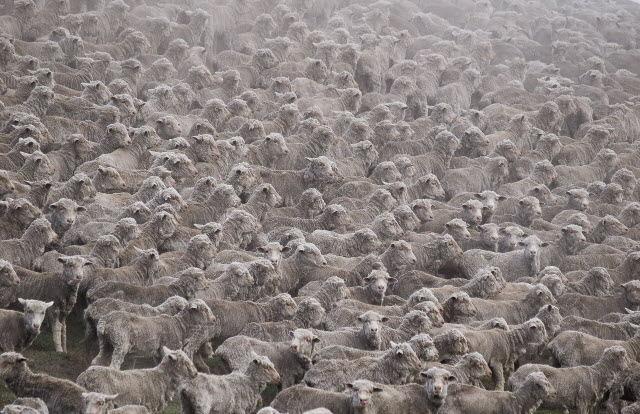
The number of sheep in New Zealand is currently about half of what it was in the 1990s. Part of the reason for this was the fact that technology and knowledge advancements have created healthier and more viable lambs. There are superior pasture and pasture management, as well as more substantial lamb weights.
The meat, milk, and fleece that comes from raising these animals are the reasons why there are so many in New Zealand and other parts of the world. The wool from sheep is the world’s most prevalent animal fiber used in industry and clothing.
Sheep wool is harvested through the process of shearing. The meat from sheep is called lamb if it is harvested when the sheep is still a lamb. If it’s harvested when the sheep is an adult (over a year of age), it is called mutton.
Along with New Zealand, the countries best known for sheep production in the modern world are Australia, the British Isles, and nations in central and southern South America.
New Zealand’s Sheep Population Compared to Other Countries
The ratio of sheep to people in New Zealand (5.6 to one) is high when compared to many other countries.
Let’s take a look at some of the countries of the world with high sheep populations. These figures are from the year of 2016:
- New Zealand: 38,460,477
- Algeria: 19,850,823
- Australia: 85,711,187
- Brazil: 16,239,455
- China: 146,018,203
- Ethiopia: 26,117,272
- India: 64,2698,000
- Iran: 53,800,000
- Pakistan: 26,794,000
- South Africa: 25,082,100
- Spain: 22,194,257
- Sudan: 50,944,000
- Syrian Arab Republic: 22,865,400
- Turkey: 25,462,293
- United Kingdom: 33,946,000
- Uruguay had 10,323,000
- Morocco: 16,894,000
- Mongolia: 14,815,100
- Kazakhstan: 12,813,700
- Peru: 14,580,200
China is the country with the most sheep in the world. After that comes Australia. New Zealand, while it has a high sheep to human ratio, has a lower population of sheep than several countries.
The History of Sheep in New Zealand
Sheep started to become a primary component of New Zealand’s economy in the 1850s. It was soon after this that wool became one of the country’s most important exports. In the early 1880s, practices to successfully export frozen meat became known and lamb and sheep meat also became an export. At this point, of course, New Zealand was still a new British colony.
Even today, most sheep in New Zealand are of the Romney breed. This is a breed of sheep from England that is hardy and able to deal with many different kinds of weather. Another type of sheep found in New Zealand is the Merino sheep. This is a Spanish sheep breed that is famous for its luxurious wool.
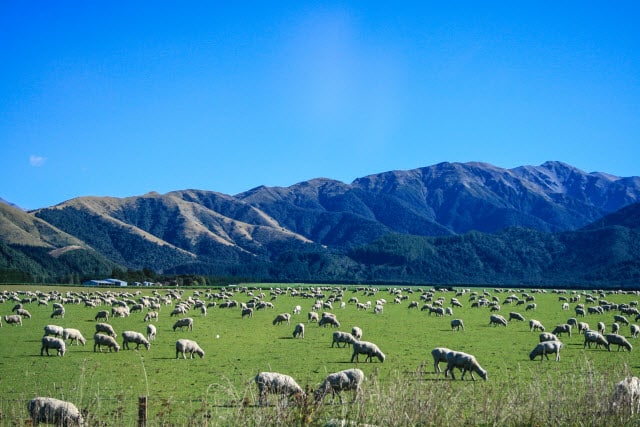
Sheep Are Part of New Zealand’s Culture
Sheep are so popular in this part of the world that some people keep some of the animals just as pets. They make better pets than you might realize and are intelligent and affectionate. They do, however, require special kinds of care and veterinary attention. A large property is also essential, especially if you will set your sheep to graze in a pasture (or more than one pasture, if you are going to use a rotating pasture system).
Roast lamb has long been a national dish in New Zealand. For several decades, the Sunday lamb or mutton roast was a fixture in most families. Usually, families would enjoy a leg of mutton or lamb with a variety of boiled or roasted vegetables (such as pumpkin, peas, sweet potatoes, and potatoes). While this has fallen out of fashion a bit since the end of the 20th century, many New Zealanders who eat meat still love lamb and mutton.
New Zealand has always had some extremely large sheep farms. In 2018, it was reported that one of the country’s most expansive sheep farms had at least 37,000 sheep, as well as 5,800 cattle. It has enormous paddocks, with ones for cattle as big as rugby pitches. This was only one of the large commercial farms on the island.
Sheep are a Major Part of New Zealand History and Life in that Country Today
As we have learned above, sheep and New Zealand are almost synonymous in many people’s minds, and for good reason.
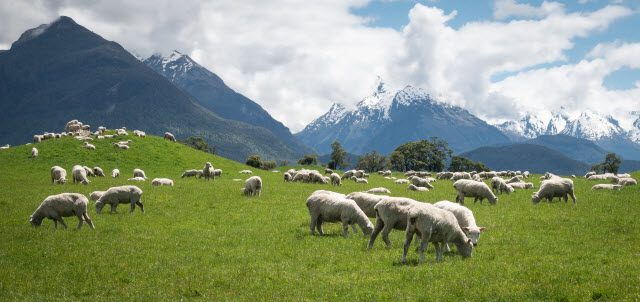
While this animal doesn’t play quite as large a part in the country’s economy as they once did, their wool and meat are still essential for New Zealand’s economic health.
While New Zealand doesn’t have the highest population of these animals in the world, it does have a remarkably high sheep to human ratio.

